David Suzuki's Blog, page 52
October 29, 2015
Sustainable development goals offer a path to prosperity
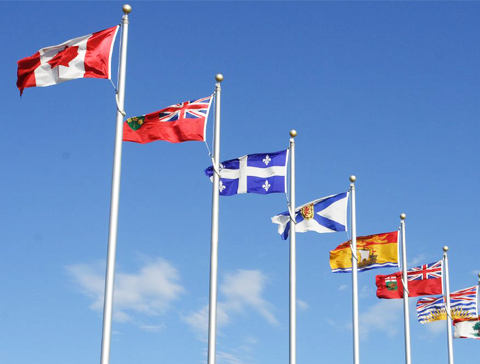
(Credit: dead-tomago via Flickr)
Sustainable development means different things to different people. The concept was popularized in 1987 by the groundbreaking Brundtland Commission report to the United Nations, "Our Common Future". Over the past three decades it has entered conversations around global poverty, health, environmental quality and social justice. It's even been used to rationalize the ongoing extraction of globally significant natural resources, and some people think it means sustainable growth. (Some cynics said environmentalists got the sustainable part while corporations got the development.)
It's possible to extract resources with attention to environmental consequences, but unless it's done in ways that ensure the planet remains healthy enough to support human life, where all people enjoy peace, health and food security, can it really be called sustainable?
In 2000, world leaders convened under the UN umbrella to establish a set of objectives and strategies that became known as the Millennium Development Goals. Although they weren't perfect, they offered new ways of looking at and targets for addressing issues like poverty, hunger, disease, lack of adequate shelter, gender equality, education and environmental sustainability.
Fifteen years later, on its 70th anniversary, the UN has established new objectives called Sustainable Development Goals. Building on the previous strategy, these include 17 goals and 169 specific targets. Developed through years of consultation among people from around the world, including social and environmental science and policy experts, the program aims to secure global peace and prosperity.
A UN statement offers a compelling vision: "A world in which consumption and production patterns and use of all natural resources -- from air to land, from rivers, lakes and aquifers to oceans and seas -- are sustainable. One in which democracy, good governance and the rule of law, as well as an enabling environment at national and international levels, are essential for sustainable development, including sustained and inclusive economic growth, social development, environmental protection and the eradication of poverty and hunger. One in which development and the application of technology are climate-sensitive, respect biodiversity and are resilient. One in which humanity lives in harmony with nature and in which wildlife and other living species are protected."
Although I take issue with some elements, such as the reference to "economic growth" (an outdated concept in an overpopulated world with increasingly scarce resources), I'm encouraged that the new plan builds on the Millennium Goals to offer more specific and stronger targets for protecting the air, land, water and natural environments on which we depend for health, well-being and survival. There's also a specific goal for protecting oceans, recognizing that ocean health is essential for peace, food security and resiliency in the face of global warming.
The Sustainable Development Goals take effect in January 2016, when UN member states are expected to enact policies and legislation to realize them and their associated targets. Canada is part of the UN, and up until 2010 we held a coveted seat on the UN Security Council. We're one of the world's wealthiest countries with the eighth-highest standard of living, according to the Human Development Index. Are we contributing in ways that will help the world meet the goals, or are we hindering their chances for success?
It's something for our new government to consider. Our newly elected leaders have a lot on their plates, domestically and internationally -- including the December UN climate summit in Paris. As with the climate negotiations, a privileged country like Canada is in an ideal position to show leadership on these development goals, especially if we expect poorer UN member countries to do their part. Canada must work with other nations to create transformative change that protects what we have and leaves the world in better shape for our children and grandchildren.
The UN goals may be lofty, but without them, and without real action to achieve them, the state of our economies, environment and social conditions will inevitably continue to degrade. And peace will elude us. That's not the future I want.
The fate of the world is up to all of us. We need to encourage all levels of government, along with relevant organizations, to understand and contribute to the plan's success. Let's ensure Canada is a proud partner in realizing the progressive change the UN Sustainable Development Goals promote.
Hey! Want more DSF? Join David Suzuki on Facebook

Send a message to Health Canada to stop GM salmon and protect wild Atlantic salmon
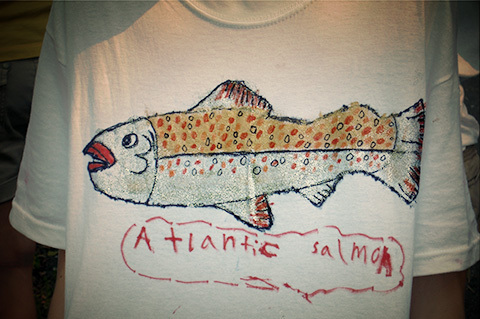
(Credit: U.S. Fish and Wildlife Service Northeast Region via flickr)
Guest blog by the Ecology Action Centre
In late 2013, the federal government approved commercial development of genetically modified Atlantic salmon in Canada. The company seeking approval -- AquaBounty Technologies -- has facilities in Prince Edward Island where eggs are started and then shipped to Panama to grow into full-sized fish. The GM Atlantic salmon contains genetic material from chinook salmon and an eel-like creature named ocean pout. These genes are inserted into the Atlantic salmon to make it grow faster. Conventional farmed salmon take three years to grow to market size, whereas the GM salmon only take 18 months.
Two Canadian conservation organizations are taking the federal government to court for failing to properly assess the true impacts that GM salmon could have on wild Atlantic salmon stocks. The Ecology Action Centre and Living Oceans Society, represented by Ecojustice, will argue that Environment Canada has underestimated the potential for GM salmon to interbreed with wild salmon and negatively affect the ecosystem. A federal court will hear the case November 17 and 18.
Approval of GM salmon has been controversial in North America. Some U.S. states, such as California, have banned the salmon because of risks posed to wild salmon populations. The U.S. Food and Drug Administration has yet to make a decision on whether it will be allowed to be consumed by humans. It's estimated that up to five per cent of GM salmon could interbreed with wild Atlantic salmon if they manage to escape into the wild. Over 60 retail chains in the U.S. have pledged not to sell GM salmon.
Wild Atlantic salmon are already endangered in many regions and face threats including habitat loss, pollution and diseases from farmed salmon. GM salmon could permanently change the very nature of Atlantic salmon.
With the risks of this type of technology so high, the public should have been consulted. Send a message to Health Canada to protect wild Atlantic salmon by stopping this new GM technology.
Find out more about the law suit against Environment Canada.
Note: Both Environment Canada and Health Canada have some responsibility on whether GM salmon goes to market in Canada
Hey! Want more DSF? Join David Suzuki on Facebook

Focus Canada 2015 - Canadian public opinion about climate change
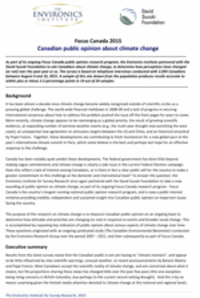
With United Nations climate negotiations fast approaching, Canadians have an increasing desire to see their country take on a leadership role. This latest installment of public opinion polling undertaken by the Environics Institute for Survey Research in partnership with the David Suzuki Foundation tracks Canadians views with respect to climate change over time. Across the country, people are confident about the opportunities provided by renewable energy and are eager to see Canada sign on to an international agreement to cut carbon emissions.
Hey! Want more DSF? Join David Suzuki on Facebook

October 28, 2015
Cleaning up water in First Nations communities: Advice to Prime Minister-designate Justin Trudeau
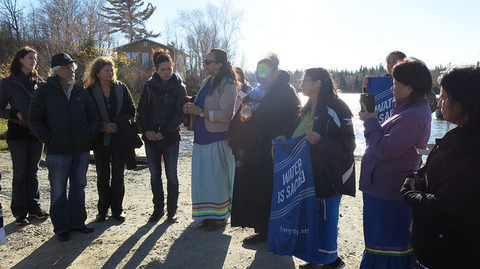
During the Blue Dot Tour, David Suzuki Foundation founders and staff met with the Shoal Lake 40 First Nation to discuss the right to clean water.
People living on First Nations reserves are 90 times more likely than other Canadians to lack access to running water. In the lead-up to the election, the David Suzuki Foundation, along with a number of First Nations communities and other organizations, urged each party to commit to end the drinking water crisis in First Nations communities once and for all. Canada's Prime Minister-designate Justin Trudeau promised on the campaign trail to end boil-water advisories in First Nations communities in five years.
What advice would I give Trudeau to help him fulfill this promise? I can sum it up in one word: relationships.
As the previous government often voiced, federal resources have been put toward the issue of unsafe drinking water in First Nations communities. In fact, the past decade has seen a First Nations Water Management Strategy (2003-2008), a two-year Plan of Action for First Nations Drinking Water (2006-2008), Expert Panel Recommendations on Safe Drinking Water for First Nations (2006), the First Nations Water and Waste Water Action Plan (2008-2012) and Bill S-8, the Safe Drinking Water for First Nations Act, which was passed in 2013. Each initiative had an associated budget.
For various reasons, including inadequate consultation, insufficient capacity within communities to implement plans, confusion over roles and responsibilities of government agencies, lack of long-term strategies and not enough measurable indicators for safe water management, past initiatives have not been successful. Unsafe drinking water in First Nations communities across Canada remains a national crisis.
As of July 31, 2015, 133 drinking water advisories were in effect in 93 First Nations communities across Canada, excluding British Columbia. As of August 31, 2015, 27 drinking water advisories were in effect in 23 First Nations communities in British Columbia.
I have spent time in several First Nations communities in Northern Ontario where drinking and cooking water was distributed in half-litre water bottles. People were afraid to take showers because of the potential resultant skin rashes. Neskantaga has been under a boil water advisory for over 20 years. Can you imagine a situation like this not being addressed immediately in your city or town?
If Prime Minister-designate Trudeau is to address this complex issue with more success than his predecessors, he must realize that solutions cannot be imposed on communities. Rather, conversations must take place in government-to-government forums in partnership with First Nations. Government staff must develop relationships with the communities, working together to ensure that mutually beneficial goals are developed, sufficient capacity is in place to deliver plans and treaty rights and First Nations' jurisdictional authority are respected.
Plans must be co-developed that address each community's specific capacities, vulnerabilities and strengths; i.e., what would effective training programs look like in this community? Do pipes need fixing? Or a water plant? Or an entire watershed (as is the case in Grassy Narrows)?
Ultimately, Canada's failure to deliver this basic human right to Indigenous communities is not a First Nations problem; it is a national shame. We've seen that our future prime minister can hold his own in the boxing ring. Canada desperately needs him to uphold his safe drinking water promises to remove this reputational black eye.
Hey! Want more DSF? Join David Suzuki on Facebook

Chef Ian Lai's "waste not" fish stock
Making soup using whole, sustainably caught fish is an excellent way to eat healthy, prevent food waste and save money.
Around the world, 35 per cent of all fish and seafood is wasted -- even the most sustainable species -- through processing, spoilage during transport, supermarket losses, going "off" in home fridges and uneaten at the table. A lot of ecosystem and industrial energy is used to bring fish to our plates. You can help reduce waste by using all parts of your sustainable seafood products.
While vegetable and chicken are popular soup stock options, fish broth is a great alternative. Some seafood stores sell fish bones and heads. Boiling these parts to make stock is surprisingly quick and not that messy. Most cultures use the whole fish -- we're just a bit behind in North America. Here's a recipe from SeaChoice Ambassador Chef Ian Lai to get you started.
Fish stock (fumet)
Yield: 4 cups. This recipe can be scaled up to make as much stock as your freezer can handle.
INGREDIENTS
1 Tbs butter
Mirepoix
¼ onion, finely sliced
½ stalk celery, finely sliced
2 mushrooms, finely sliced
1 lb fish bones, cut and rinsed
¼ cup white wine or dry vermouth
3 cups cold water
bouquet garni, tied together with kitchen twine:
3 sprigs parsley
2 sprigs rosemary
1 bay leaf
DIRECTIONS
Sweat mirepoix (vegetables) and chopped bones in butter for three to four minutes.
Add wine and bring to simmer.
Add cold water and bouquet garni. Simmer gently for 20 minutes. Strain.
Hey! Want more DSF? Join David Suzuki on Facebook

October 23, 2015
Ontario to get a million trees for each year in Confederation
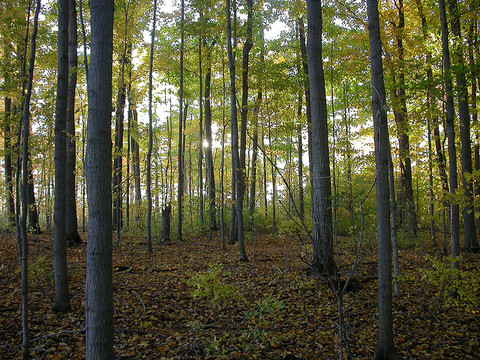
(Credit: Brad Smith via Flickr)
Studies by the David Suzuki Foundation and others have found that people living in areas with many trees, especially large trees, report feeling healthier than people in areas with fewer trees, and that rates of heart condition, cancer, mental health problems, diabetes and other ailments are lower in treed areas. Trees also provide numerous valuable services such as flood control, temperature regulation, air filtering, carbon dioxide reduction, storm protection and habitat for wildlife.
Recognition of the immense value of trees led to all-party, unanimous support in the Ontario legislature on October 22 for a resolution introduced by Wellington-Halton Hills MPP Ted Arnott to plant tens of millions of trees across Ontario.
Arnott's proposal is to plant 150 million trees beginning in 2017 to celebrate the 150th anniversary of Ontario's entry into Confederation with New Brunswick, Nova Scotia and Québec in 1867.
The plan is based on a successful campaign in Wellington County, Ontario, where local residents have planted over 150,000 trees each year since 2004.
The Wellington County Green Legacy Program is now the largest municipal tree-planting program in North America, and Arnott hopes to take the program provincewide.
The David Suzuki Foundation supported the resolution and is happy to see recognition from all parties of the need to grow a green legacy for Ontario with each tree seedling planted.
Thanks to Arnott and his colleagues in the Ontario Legislature for coming together across party benches to protect the environment.
The following is a statement that the David Suzuki Foundation offered in support of the resolution.
Statement by Faisal Moola, PhD
Director General, Ontario and Northern Canada,
David Suzuki Foundation
Adjunct Professor of Forestry, University of Toronto
The David Suzuki Foundation supports the resolution by the Hon. Ted Arnott, the Member for Wellington-Halton Hills, that the Province of Ontario commit to a major tree-planting initiative in celebration of the 150th anniversary of Ontario's entry into Confederation.
Although we don't often give it much thought, urban parks, woodlots and managed forests in and around our communities benefit us all immensely. Trees clean our air and filter our drinking water. Forests remove carbon dioxide from the atmosphere, thereby helping us to fight climate change and green urban spaces cool our cities and protect us from storms. And this doesn't even account for the health and psychological benefits we receive when we spend time outdoors going for a walk or sitting down for picnic with our families in a beautiful park.
Forests are the life-support systems of our families and our communities. They keep us healthy and happy and bring immense value to our lives -- providing clean air, safe water to drink and healthy food to eat from the animals that are sustainably harvested by First Nations and non-Aboriginal hunters.
We strongly support a renewed commitment by the Province of Ontario to plant millions of trees across the province. The Ministry of Natural Resources, working with First Nations, municipalities, school boards, community organizations, the business community, the forestry industry and volunteers, should lead this initiative. The David Suzuki Foundation looks forward to partnering with like-minded organizations to help make this vision a reality.
Hey! Want more DSF? Join David Suzuki on Facebook

October 22, 2015
Democracy isn't just about politics; it's about all of us
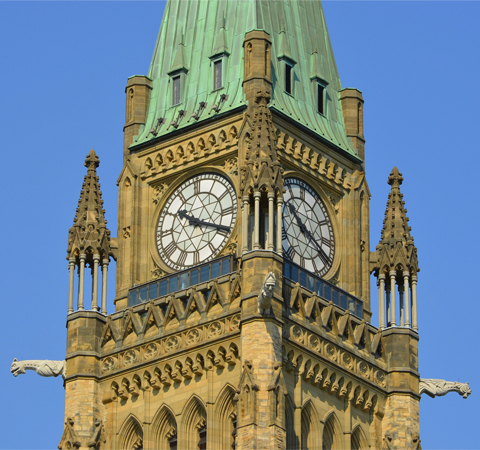
I've lived through many elections, but I don't recall many in which emotions ran so high. In the heat of such a campaign, things get said, disagreements arise and tensions increase. Now that we've elected a new government, I want to commend Prime Minister-designate Justin Trudeau on his positive campaign and congratulate him on his party's sweeping victory. I still think the new government has an opportunity to strengthen its climate change policies, but more on that later...
We also have to thank the people from all parties who have devoted so much time, energy and money to serve the country, from the candidates, successful and not, to the volunteers, who believe enough in this country and its democratic traditions to give their all. Their families also deserve a lot of credit. Whether or not we agree with a candidate, leader or party and their policies, we can be grateful that they dedicate themselves to keeping our country strong and free.
Most of all, I want to commend Canadians. Voter turnout jumped to more than 68 per cent -- not perfect, but better than in some time. Canadians sent a loud and clear message that they want to live in an open, progressive country that promotes diversity, social justice, environmental protection and respect for First Peoples.
Those of us who work in the environmental movement look forward to a renewed relationship with our federal government. We know our elected representatives won't always agree with us, but we're hopeful our new leaders will give us a fair hearing and respect that we're all trying to contribute to making Canada a positive example for the world.
The new government has its work cut out. On top of initial administrative duties, dealing with trade agreements and appointing Cabinet members, it will also be expected to prepare for the UN climate summit in Paris in December. As some people know, during the lengthy campaign I had a disagreement with Trudeau over his party's climate policy. I still think his climate plans need to be strengthened, especially with clear and ambitious targets for reducing greenhouse gas emissions. But I'm confident the new government will take this issue seriously, and I hope it will draw on the expertise of other parties and their leaders, who offered innovative proposals.
I also hope they will consult with experts from the David Suzuki Foundation and other organizations, who have been researching and proposing viable solutions for many of the environmental challenges Canada faces, including ocean health, species and habitat protection, toxins and pollution and clean energy and climate change.
No one is suggesting we should do an immediate 180-degree turn on resources and economic priorities. But it's time to shift our thinking. Continuing to make fossil fuel extraction the country's economic priority is a thing of the past. We can create more jobs and a stronger economy by ending fossil fuel subsidies, putting a price on carbon pollution, promoting energy conservation and encouraging the clean technology and clean energy sectors.
We must also remember that the government is here to represent the interests of all Canadians -- and not just those who voted for it. We're the ones most affected by government policies. Corporate interests are important, but they should never outweigh the interests of citizens.
So many Canadians got engaged with this election, holding conversations, watching debates, sharing information on social media and through letters to newspapers, volunteering and, finally, voting. The government has its work cut out, but so do we. A democracy is as strong as the people who make its values come alive, every single day. It's not all up to the politicians. It's up to all of us to stay engaged, ensure our interests are looked after and work with people of all backgrounds and political stripes to make sure Canada continues to be strong, prosperous and free, with respect for diversity and the progressive values that have made Canada one of the best places on Earth to live.
There's a lot of work ahead for all of us. But right now, I want to say how proud I am to be Canadian, to live in a country where people care enough to make it work.
Hey! Want more DSF? Join David Suzuki on Facebook

October 20, 2015
Why I'm testing my home for radon
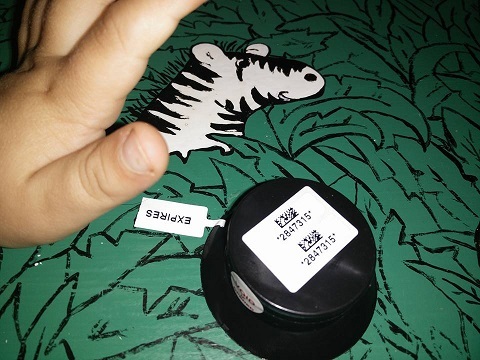
The best time to test for radon is during cooler seasons when your heater is on and windows are closed.
I'm a homeowner, wife, mother and passionate advocate for health promotion and cancer prevention.
Radon Aware asked me to share the four reasons I'm testing my home for radon (a known carcinogen):
Reason #1: I hate cancer
Radon exposure is responsible for 16 per cent of all lung cancer deaths in Canada AND the leading cause of lung cancer among non-smokers. No areas of our country are "radon-free".
Reason #2: It's cheap
A long-term test can be purchased online from Radon Aware for $30. The best test device measures concentrations over a period of at least 90 days.
Reason #3: It's easy
If you can unwrap a granola bar, you can test your home for radon! Simply remove the detector from the package and it's "on". The accompanying instructions will help you choose a room to test -- it should be at the lowest level of the home where you spend at least four hours a day. (DO NOT test the kitchen, bathroom, crawl space or laundry room.) After 90 days, complete the data sheet; be sure to include the detector number, date you began testing and your postal code, and mail it to the lab in the return envelope. You can then access your test results online within two weeks.
Reason #4: It's fall
The best time to test is during cooler seasons when your heater is on and windows are closed.
Unlike Halloween, testing your home for radon doesn't need to be scary or tricky!
What else would you like to know about testing your home for radon?
Sincerely,
Lindsay Coulter, a fellow Queen of Green
Hey! Want more DSF? Join David Suzuki on Facebook

Greeting cards that support the people and places you love

Get ahead of the holiday rush and give nature a great gift while you're at it! Each 12-card card pack contains three copies of four different greeting cards, plus 12 envelopes, all made from 100 per cent post-consumer waste recycled fibre. Choose from three themes: seasonal, pollinators and belugas!
Hey! Want more DSF? Join David Suzuki on Facebook

October 17, 2015
Join the Blue Dot movement
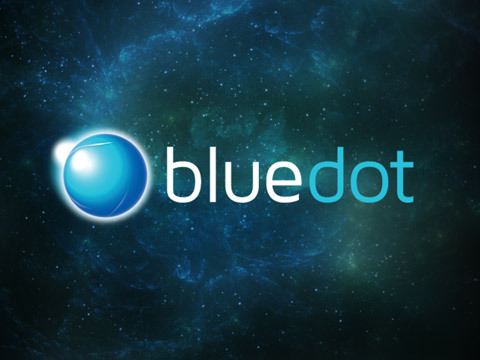
Stand with Canadians across our country who are asking all levels of government to recognize our right to breathe fresh air, drink clean water and eat healthy food.
Hey! Want more DSF? Join David Suzuki on Facebook

David Suzuki's Blog
- David Suzuki's profile
- 247 followers



